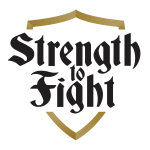By Daniel Gilman:
“You weren’t raped,” my friend was told. “If you didn’t fight back enough to make the assailant cry out, then you didn’t resist enough for it to be called rape.” My friend had gone on a missions trip and was sexually assaulted by one of the other volunteers. When she told her mentor, my friend was told that it wasn’t sexual assault. As a result the process of addressing it was delayed and the assailant was enabled to continue abusing others unfettered by the law.
Only 27% of victims of sexual assault consider their experience to be sexual assault.[1] Part of the reason for this is that friends and family, and even the individuals themselves, often believe myths about what constitutes sexual assault. One of the ways that you can help yourself and others is to be able to identify sexual assault. As a part of that, I’d like to burst four rape myths.
Myth 1: Unless the victim screams for help or violently resists what took place was not sexual assault.
The determining factor as to what constitutes rape is consent or the lack there of, not whether or not the victim fought back. If someone forces sex through their position of authority, uses violence, threats, manipulation or if full consent was not given, then that it is rape. A person who is asleep or mentally or physically incapacitated, either through the effect of drugs or alcohol or for any other reason, is not capable of giving valid consent. Sex without consent is rape.
Myth 2: Sexual assault is committed by strangers
Many imagine that rape is carried out by a stranger who hides in the bushes or alleys waiting for a young victim to walk by. In reality over 80% of rapes are committed by someone known to the victim, including the victim’s boyfriend or girlfriend, husband or wife.[2] The determining factor of rape is lack of consent; not whether or not the person is known to them. If a husband or wife forces their spouse to have sex this is rape. Since 1983 the laws in Canada reflect this reality and specifically recognize that non-consensual sex within relationship will be prosecuted for what it is: sexual assault.[3]
Myth 3: The number one way a woman or man can protect themselves from sexual assault is to avoid being alone at night in dark, isolated places.
Essential to combatting sexual assault is understanding the locations or environment that are most dangerous. According to Women Against Violence Against Women most assaults occur in a private home (60%) and 38% of this is in the victim’s own home.[4]
Myth 4: Sexual assault is committed only against girls and is only committed by men
The language used to refer to sexual assault often exclusively refers to perpetrators as men and victims as women. As a result, men who have been abused often find fewer people ready to help them. There are a number of men who have been victims of sexual assault including rape and don’t recognize that they were even victims because society envisions that only men commit rape and only girls can be raped. This is not the case. A man who is raped is even less likely to have resources or people to confide in. According to the Federal Bureau of Justice there were approximately 20,000 sexual assaults of males ages 12 and over in the USA in 1991.[5]
Why it matters
I am very thankful that my friend received more accurate input not long after the conversation above. Once she learned that what she went through was sexual assault, she was able to move forward on her healing journey. My hope is that, as we expose these myths, both women and men will be able to begin their path to freedom as well.
[1] http://www.cambriancollege.ca/aboutcambrian/silenceisntconsent/daterape.html [2] http://www.wavaw.ca/mythbusting/rape-myths/ [3] http://www.theglobeandmail.com/news/world/canadian-law-only-changed-26-years-ago/article1150644/ [4] http://www.wavaw.ca/mythbusting/rape-myths/ [5] http://www.d.umn.edu/cla/faculty/jhamlin/3925/myths.html
